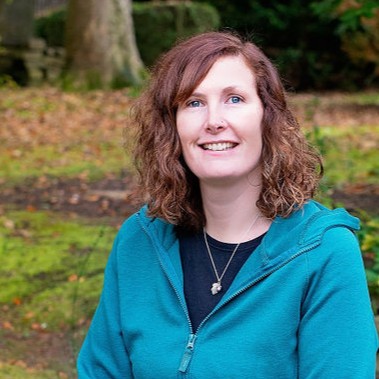Keep up to date /
Work effectively from home by "zoning"
Categories
Posted in Candidates, Employers, Health and Wellbeing on Apr 07, 2020 by Keeley Edge
We are certainly currently living in strange and uncertain times and we thought we would take this opportunity to ask those in our network to share their expertise, knowledge and skills to help us at this time.
In this blog, we’ve asked Jennie-Kate McCreight from JK Changework to help us all work from home more effectively.

Working Effectively from Home
If you are now in the stage of working from home, you may be having to evolve into this physical and emotional space, acclimatising to this new style of working.
You may have found that it’s not as simple as figuring out the logistical considerations of where to work. It’s also about navigating some different emotional states as you adjust to working away from colleagues or clients, balancing a shift from “work head” to “life head”.
Just as your work routine might become a little more “choppy”, so too might the emotions that you experience as you shift into this working-style.
I want to reassure you that some of that “choppiness” - the lack of motivation, a feeling of being out-of-sorts or a disrupted sleep pattern are all just part of the general disruption to this new working style. Acknowledge these feelings and know that there are things you can do to maintain a positive mindset.
Taking a little time to “design” your working day and space can pay dividends in dealing with the ebb and flow of Home-Lone-Working. And a great place to begin is “zoning”.
Zoning
When I refer to “zoning”, I am talking about defining spaces and environments for work and life and keeping the two as separate as possible. With this creation of space, comes a consideration of “state” or the mood and emotions you need. Think of this as “mood-lighting” for the mind as you shift into new habits. So you also set the scene for your emotional state.
“Zoning” your activity can contribute to maintaining positive mental health and increase motivation and focus. It also means (if you are experiencing a lull), you can move and shift into something new and re-invigorate yourself.
Zoning can be a really practical way of starting out and setting a working schedule, ensuring flexibility around life/work balance. It also considers your core needs, ensuring that you put your well-being and productivity hand-in-hand.
Consciously consider where you will define a “work zone” and which “zones” are going be those precious places for switch off and relaxation. It might be easy to slump on the sofa with your laptop or snuggle under your duvet for a conference call. If these are the places you plan to rest your mind and body, keep them that way.
(For all those people who love a bit of visual, you might even want to get a colour diagram going to map this out in your home space – be it by room or even by furniture items)
Prioritise Preparation
Preparing your “work zone” starts with prioritising time and space to do this effectively. A well zoned work space will help you maintain a sense of focus and comfort. Consider the spaces you plan to work in and prepare them for optimum comfort and minimal distraction. Ensure that the space is clear, that your desk or working surface is comfortable to work with. Consider that temperature and light are sufficient; a room that is cold and dark is only going to leave you feeling that way. Likewise, if you are too hot or in a space with glare, you may struggle to get the focus you need for productivity.
Before you begin, ensure you have everything you need such as a drink, notebook, pen to hand. Preparation at the end of the day is key too - prepare to switch off and wind down. I recommend doing your to-do list at the end of the day, so you can create some defined head space and pick things straight up when you next work. Leave your work phone in the work zone and take those coffee mugs and orange peel/chocolate wrappers away with you.
Anchoring
Anchoring is a technique that coaches use to help the mind to associate a particular emotional or physical state through sub-conscious association with a particular stimuli. A simple DIY approach to this would be to consider having a particular item of clothing that you can put on for work or something you can transition to when you finish work. This might be a pair of socks you wear for your work activity or a comfy jumpy that you pop on when you are done for the day. This will help your mind get further into recognising the “zones” you create and support you to maintain the state you want.
Flex Zones
This is an alternative space to transition to throughout the day to help you re-focus and change perspective if find yourself lacking focus or losing positivity. Flex zones are not only good to encourage movement and ensure short regular breaks, they also help you to re-focus and re-energise and shift your feelings.
Break-out
A break-out zone is a space or activity. Taking structured breaks will help not only with motivation and focus but are also key to maintaining your well-being. It’s important for mind and body that you are not stuck at a screen all day. Breaks will help your mood and most likely your productivity, keep them structured to time. The tip here is to take your mind off work with a different space and activity and then return to your work zone shortly after.
Switch-off Zone
A switch off zone is the spaces you can keep for “life” stuff. This is a no-work-zone - this is where you relax, eat, sleep etc. Your working pattern may be a little haphazard at the moment as you adjust and/or manage “life” stuff around working. Think of the Switch-off zone as a precious space for you to enjoy calm, fun, family time, relaxation. For me these are a corner chair in my living room, the bath, my bed, the kitchen and my garden.
Self-care is really important when working in a more isolated way. Zoning is a great way to be more in tune with your emotional state and consider what you need to function positively and proactively during this time.
Zoning is just one of the ways you can support your emotional well-being when working from home. To discover more of JK’s blogs, visit www.jkchangework.life/blogs
 JK (Jennie-Kate) is the coach behind JKChangeWork. JK offers simple, effective and collaborative coaching for people and businesses who are ready to make changes.
JK (Jennie-Kate) is the coach behind JKChangeWork. JK offers simple, effective and collaborative coaching for people and businesses who are ready to make changes.
Before JKChangeWork, JK worked in a range of mental health and employment services roles, managing teams and enabling people to deliver positive outcomes and continually develop.
Now, JK coaches people to get unstuck, feel happier and gain skills for life. When she’s not coaching private clients, JK works with small/medium businesses to build health and happiness into their culture, focusing on workforce well-being and empowering staff to thrive.
If you would like an introduction to Jennie-Kate, please let us know and we will happily introduce you .
At Key Appointments, we are experts in recruiting the right people, for the right roles, with the right company. We have a network of specialists who can help with mental first aid, life coaching, HR and financial advice.
If you need assistance with any aspect of recruitment or employee well-being, please get in touch.


